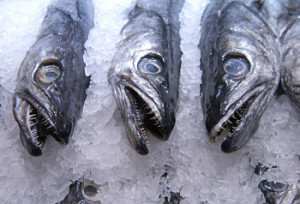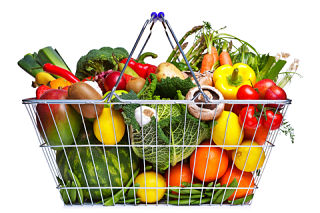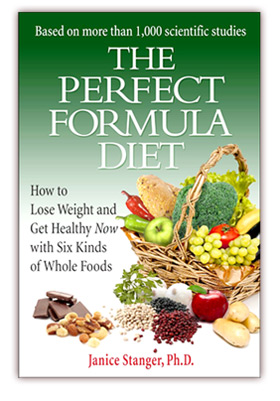How Can You Protect Yourself Against This Really Bad Advice?
The 2015 Dietary Guidelines for Americans, the official federal directive on how to eat, starts out with a promising goal. The Guidelines observe “about half of all American adults—117 million people—have one or more preventable, chronic diseases,” and pledge to use the “most current scientific evidence” to advise Americans on how to lose weight and get healthy.
Unfortunately, the Guidelines then go on to perpetuate the nutritional confusion and myths that result in so much unnecessary disability, medical costs, and premature death. While some reviewers note that the Guidelines are as not as bad as they could have been, the American people deserve far better than this. If you saw someone driving the wrong way on a freeway, and they slowed from 60 to 55 miles an hour, would you say “Good, this is a step in the right direction”? Or would you shout “Stop, turn around now before you kill someone.” The Dietary Guidelines are as far off the mark – and as deadly – as the wrong-way driver.
Here are seven of the most dangerous mistakes in the Guidelines.
ONE. Urge people to eat known neurotoxins, pro-oxidants, and carcinogens
Mercury is a potent neurotoxin which has no place in the human body. However, the

Despite the acknowledged fact that all fish contain mercury, the Guidelines advise you to chow down on this potent neurotoxin, despite the fact that plants make and provide safe omega-3s without mercury
Guidelines, while acknowledging all fish contain mercury, urge you to eat seafood for omega-3 fats. Eating so-called “low mercury” fish, as the Guidelines advise, is likely to be of little effect, as there is no safe amount of mercury to send to your brain. Pregnant women are specifically directed to eat seafood, even though mercury passes through the placenta into the vulnerable brain of the fetus. Fish get their omega-3’s from plants, which are the original source for all omega-3’s, and so can you.
Heme iron is another metal that the Guidelines mention as essential to nutritional adequacy. The problem with heme iron is that it increases the amount of oxidation in your body. This can result in DNA damage, injury to artery walls, and increased cancer risk. Heme iron is naturally present only in animal foods, and your body absorbs it indiscriminately, regardless of need for iron. Thus, toxic excess can easily accumulate. In contrast, your body absorbs the non-heme iron in plants as needed. Thus plant-based iron is far safer in terms of health, and can easily be consumed in adequate amounts on a whole foods diet. Why don’t the Guidelines simply give the basic facts about iron, without pushing the most dangerous kind?
The Guidelines allow for processed meats, a known carcinogen, as part of a “healthy” diet as long as salt and saturated fat are kept within designated limits. Consumers are also urged to eat meat and poultry as “protein foods,” even though cooking these animals foods generates known carcinogens such as heterocyclic amines, polycyclic aromatic hydrocarbons, and N-nitroso compounds. The higher the cooking temperature (think broiling, grilling, and barbecuing), the more carcinogens are

The Guidelines have no trouble working processed meats into eating plans, despite their role in increasing the risk of cancer
formed both on the animal foods and as part of cooking fumes. The Guidelines totally fail to warn you of these facts.
TWO. The restriction on saturated fat is useless, and can easily lead to a diet based largely on animal foods
The Guidelines tell you to limit saturated fat to 10% of your daily calories. On the surface this sounds good, until you realize that the most important part of your diet is its overall design. You want to get the great majority of your calories from whole plant foods. Is this compatible with 10% of calories from saturated fat?

As you can see, it’s quite easy to hold saturated fats below the 10% of calories limit, and still eat animal foods by the plateful
See the chart here for a daily menu that gets less than 10% of calories from saturated fat, yet over half its calories from animal foods. How is this possible? Animal foods are not just pure saturated fat, and are dense with calories. The food in the chart is not unlike that a typical American might eat in a day: bacon and eggs at breakfast, leftover meat at lunch, and chicken for dinner – with some milk and cheese thrown in. Simply limiting saturated fat, in the absence of an overall healthy eating pattern, is not the secret to health.
THREE. Focus on a few specific overhyped nutrients
However, while lip service is paid to patterns, the Guidelines still focus on a few overhyped nutrients: the splashy trio of protein, calcium, and omega-3 fats. The truth is that there are millions of biologically active substances in food, and these interact in complex ways that are poorly understood. To arbitrarily pick out three nutrients to highlight is misleading, and can lead you to feel okay about eating a bad diet as long as it has enough of these three substances.
Protein retains its unearned status as nutritional royalty. The “MyPlate” icon introduced in the 2010 Dietary Guidelines is kept unchanged for 2015. Protein has its own spot on the plate, while all the other spaces on the icon are filled by actual foods. This perpetuates the myth that only certain foods can fulfill protein requirements, bringing us to the next dangerous mistake.
FOUR. Fail to acknowledge the simple fact that plants are the base of the

The simple fact is that plants are the base of the food chain on planet earth. All animals, including farmed animals, get their nutrients originally from plants.
food chain on planet earth
One of the issues in focusing on a few overhyped nutrients is perpetuating the tired myth that you need to eat specific foods as “sources” of these nutrients. And the “sources” most often promoted by the Guidelines are animal foods.
This ridiculous practice ignores the fact that plants are the base of the food chain on our planet. With the exception of vitamin B12, which is made by bacteria, every other nutrient your body is meant to get from diet is either manufactured by plants or else absorbed from the soil by plants via their roots.
Think about calcium as one example. Calcium is vital to plant metabolism, and plants absorb calcium from rock particles dissolved in the soil as part of normal life processes. How does calcium get into cow’s milk, since cows don’t eat soil or rocks? The cow eats plants that have absorbed calcium, and so can you. Cows can’t make calcium any more than they can make silver or gold or any other mineral.
Despite this fact, Appendix 11 of the Guidelines lists 36 specific food “sources” of calcium. Only 7 of these are plants; the great majority are dairy foods (including 4 kinds of yogurt and 15 kinds of cheese). Is it a wonder that the public is confused about calcium and believes that dairy is essential for health?
Protein is another example. Protein is a linked chain of 20 amino acids – the same amino acids shape the lives of both plants and animals. However, the essential amino acids – the ones you do need to get from diet – are manufactured only by plants and bacteria. Cows and other animals can’t make essential amino acids any more than they can make minerals. You can easily chose to get your essential amino acids from plants and avoid the animal middleman.
FIVE. Restrict the goals set for healthy whole food consumption to make room for health-destroying foods

These are some of the healthy foods you should be eating in abundance. It’s hard to accomplish, though, if you fill up on all the unhealthy choices that the Guidelines recommend
The Guidelines set low targets for consumption of actual healthy foods – vegetables, fruits, whole grains, and beans. True, the 2015 targets are higher than what most Americans are currently eating.
However, the best way to encourage Americans to choose more of these foods is not to set out specific artificial targets, such as the Guidelines’ advice to eat two and a half “cup equivalents” a day of vegetables. People might be more inclined to eat more vegetables and other health-promoting foods if the Guidelines advised a varied whole foods, plant-based eating plan, without arbitrary targets for set amounts to eat each day. On this type of diet, appetite is a reliable guide for how much to consume, as you eat when you are hungry and stop when you are full, paying attention to body signals and giving your body time to register it has had enough food for now.
In the Guidelines, however, the most desirable foods are crowded out to reserve calories for unhealthy oils and animal foods.
SIX. Are impossible to implement, sowing confusion and requiring unreal amounts of counting and measuring
Calorie restriction for permanent weight loss is a failed strategy. It has never worked, and won’t ever work, because it violates the fundamental human drive to eat enough to survive. Yet the Guidelines rely on this useless tactic to address the national crisis of obesity.
The Guidelines are based on serving sizes, determined by confusing weight or volume “equivalents.” If you wanted to follow this advice, you would have to obsessively measure and track every single bite you eat all day, every day. Who is going to do this? No one! So the USDA is safe, because when you fail to lose weight

Portion control is a totally failed strategy for permanent weight loss. Yet that is all the Guidelines have to offer you if you are struggling to lose weight
they can simply say that you didn’t follow directions. All the sudden it’s your fault, instead of the USDA’s.
The Guidelines are supposed to share the best science, so people can permanently lose weight without the pointless pain of artificial portion control and calorie counting, including silly demands to track every food morsel. The successful way to lose weight – and keep it off – without gnawing hunger is a whole foods, plant-based diet.
SEVEN. The Guidelines pander to politics and industry – science is for window dressing
In other words, due to intense political pressure and lobbying, the Guidelines must assure that no one in the food industry is significantly challenged or would lose any customers. Scientific evidence is carefully selected to bolster claims that a healthy diet should include all the foods that lines grocery store shelves now. This is easy to do, since industry now finances so many published studies. This “evidence” is carefully designed show what the research funders want people to think.
The group writing the Guidelines does not distinguish meaningful studies from industry-funded articles, which are basically infomercials for unhealthy foods, yet wrapped in the sanctity of a peer-reviewed medical or nutrition journal. Far from objectively evaluating the scientific evidence, the Guidelines turn a blind eye to the vast literature showing numerous harmful effects of eating meat, poultry, fish, dairy, and eggs.

A whole foods, plant-based diet can be delicious, fun, and easy. Protect your health by learning the real facts about nutrition
Protect Yourself
My prediction is that I will be writing pretty much this same post again when the next set of USDA Guidelines comes out in 2020. The government will not begin giving truly health-saving advice in your lifetime. The only way to restore and keep improving your health is to learn the actual facts about nutrition yourself, to take responsibility for your own health. The more you learn, the more you will realize the evidence points to a whole foods, plant-based diet. That is the dietary pattern for outstanding health, energy, and longevity.
If you enjoyed this discussion, you may want to read this post about why plants are the base of the food chain on our planet – nutrients in animal foods come from plants.
Intrigued? Now you can use our Whole Foods Blog Finder to target informative, fun postings on whole foods, plant-based diets. Quick information at no cost!
Blog posting written by Janice Stanger, Ph.D. Janice authored The Perfect Formula Diet: How to Lose Weight and Get Healthy Now With Six Kinds of Whole Foods. This book guides you to a simple, delicious plant-based diet based on science, not politics.
Tags: 2015 Dietary Guidelines for Americans, cancer, USDA, whole foods plant-based diet





